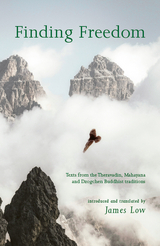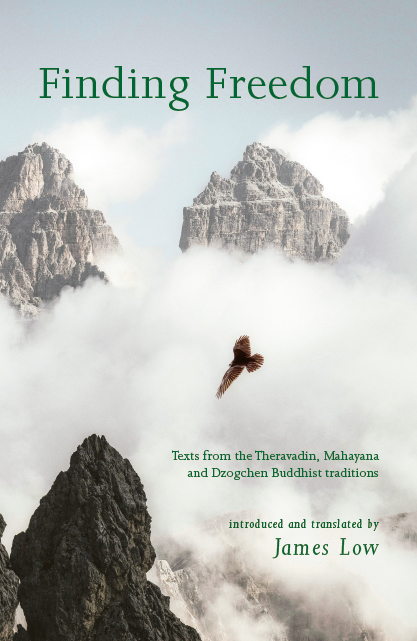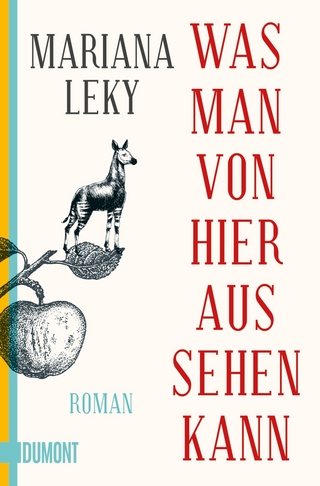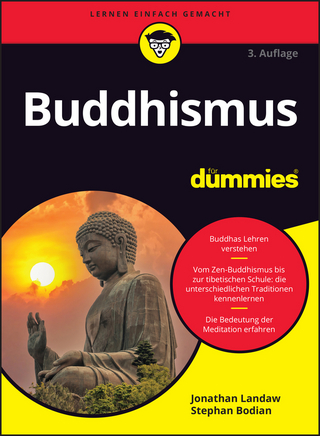Finding Freedom
Wandel edition khordong (Verlag)
978-3-942380-27-0 (ISBN)
Lese- und Medienproben

The text presented in the first section, Fight the Good Fight, is The Dhammapada which sets out clearly the importance of ethics as the necessary frame of reference if we wish our experience to be fulfilling. Negative actions lead to negative consequences and positive actions lead to positive consequences. This may seem over-simplistic and even naïve but such a sense of the determinism inherent in the unfolding of cause and effect provides a perspective, a distance from enmeshment, that allows us to review our intentions in the light of both their short and long-term outcomes. Activity of body, voice, and mind generates its own outcomes and consequences. No other, no god or devil, is rewarding or punishing us. It is the logic of intention and enactment that drives the multiplicity of possible resultant experiences.
The second section, Mistaken Identities, belongs to the Mahayana tradition of Buddhism and focuses on the famous text, The Sharp Weapon Wheel. This beautiful and moving text highlights the power of karma and the terrible fact that we cannot evade the consequences of our actions except by awakening from our own dualistic delusions. We have mistaken the rich display of emptiness for endless real entities and this mistaken identification will have ever-multiplying consequences if we do not recognise what has happened. When we separate self and other and act as if we were more important than others, this self-cherishing hides our own potential and blinds us to the potential of others.
The third section, Sweet Simplicity, presents four short texts. The first, Lamp Clarifying the Essentials, by Tsultrim Zangpo, also known as Tulku Tsulo, offers an account of emptiness that opens the way to the Dzogchen tradition of Buddhism, the central focus of the other three texts. Tulku Tsulo highlights the importance of the ground or source. If you know where things come from then you have more sense of what they are. The next text is The Evocation of Samantabhadra which is believed to be the actual statement of the primordial Buddha. It shows clearly and in detail how the infinite dramas of the six realms of samsara are enacted within the theatre or sphere of the unborn mind. This sets the frame for Gonpo Wangyal’s brief introduction to the mind as it is. This Uncovering the Presence of the Mother of all the Buddhas is a practice text and each sentence can be activated by sitting with it in opening presence. The concluding text by Ayu Khandro is also a brief Dzogchen practice text: The Record of the Heart-felt Advice of the Dakini. It is an excellent reminder for those who have received many teachings and also functions well as a first taste of how to become aware as awareness. For more information see the full introduction below.
James Low studierte Sozialanthropologie und kam Ende der sechziger Jahre nach Indien und an die Visvabharati-Universität im westbengalischen Shantiniketan. Er wurde Schüler des tibetischen Tantra- und Dzogchen-Meisters Chimed Rigdzin Rinpoche, unter dessen Anleitung er buddhistische Philosophie und Praxis sowie die tibetische Sprache studierte. Gemeinsam mit Rinpoche übersetzte er viele Praxistexte. Er erhielt einen Doktortitel der Nyingma Research Society und unternahm wiederholt ausgedehnte Meditations-Retreats. Seine weiteren Hauptlehrer waren Dudjom Rinpoche (1904-1987), Kangyur Rinpoche (1897-1975) und Kalu Rinpoche (1905-1987). Zu Beginn der achtziger Jahre arbeitete er in London zunächst als Übersetzer und Tibetisch-Lehrer und wandte sich dann der Psychotherapie zu. Ausgebildet in Psychoanalyse, Gestalt-, Kunst- und Sexualtherapie, arbeitete er im öffentlichen Krankenhaus, in eigener Praxis und als Ausbilder und Supervisor. Seit 1980 hält er auf Ersuchen seines Mentors in Europa Dharma-Vorträge und Dzogchen-Seminare. In seinem Buch »Aus dem Handgepäck eines tibetischen Yogi« hat James Low Quellentexte der Dzogchen-Tradition übersetzt und erläutert.
Khordong Terchen Tulku, Nuden Dorje Drophan Lingpa Drolo Sal
Ayu Khandro (Long Life Dakini), also known as Dorje Paldrön, lived from 1839 to 1953. She was a practitioner, yogini, and terton of Tibetan Buddhism in Eastern Tibet. An accomplished Dzogchen meditator, she is renowned for her extensive pilgrimages throughout Tibet, long periods of dark retreat[1] practice, the gongter[2] of the practice of the yidam Senge Dongma (the Lion-Faced Dakini), various forms of Chöd,[3] and her lifelong dedication to spiritual practice. The information we have about Ayu Khandro comes from the oral commentary that she personally gave to Chogyal Namkhai Norbu in Dzongsa, 1951. He wrote her namthar, or spiritual biography, which was later published in Women of Wisdom[4] by Tsultrim Allione. Ayu Khandro met, and was taught by, many great masters of her day ; Jamyang Khyentse Wangpo,[5] Jamgon Kongtrul the First, Chokgyur Lingpa,[6] Nyala Pema Dündul, Adzom Drukpa,[7] Togden Rangrig and the ninth Tai Situpa, Pema Nyingche Wangpo. She led the life of a hidden yogini, spending a significant amount of her life in retreat or as a wandering chodma.[8] She was recognised as an emanation of Vajrayogini. from Wikipedia
The ocean of Buddhadharma, the Buddha’s teaching and practice, is vast. So many views and paths, such richness and variety of styles and methods – yet they all focus on the task of helping us awaken from the sleep of our assumptions. We are not who we think we are. The true depth and wonder of our potential is hidden from us by our own busy activity through which we seek to maintain the illusions we believe in. This book offers three approaches to awakening. The first section, Fighting the Good Fight, is concerned with how we can commit ourselves to the mindful activity of renouncing our familiar and often comforting limiting habits. Here the orientation is towards leaving our familiar ego-home and going on a journey to seek something which seems only to be available elsewhere. By renouncing samsara we hope to gain entry into nirvana and enjoy the happiness which is free of all suffering. The second section, Mistaken Identities, is concerned with how we can commit ourselves to developing the honesty and courage necessary for facing the karmic consequences of previous actions arising from our limiting habits and the many transient mistaken identities which we have adopted. Here the orientation is towards recognising how our self-centredness has harmed others and made us blind to our interdependency. By accepting that we have been the cause of so much suffering we see that we must turn to face every difficult situation without self-pity or blame. For this we need the courage of the transcendent qualities of generosity, morality, patience, diligence, concentration and wisdom and especially the mental clarity necessary for maintaining the view of the emptiness of all phenomena. The third section, Sweet Simplicity, is concerned with how we can relax and release ourselves from all limiting habits and thus effortlessly abide in our limitless intrinsic freedom. Here the orientation is towards awakening to the actuality of our mind as it is. For this to occur we need to receive the transmission which is grounded in non-conceptual clarity. We cannot think our way out of samsara since samsara is itself constructed out of thought. We seek only ‘early retirement’ from the burden of the ceaseless activity of maintaining delusion. By letting go of our central role as the indispensable master of ceremonies of our life drama we find ourselves in the intrinsic freedom of our true home, our unborn mind which cannot be found by seeking yet is always freely available. These three sections are quite different in tone yet are harmonious and compatible in their underlying message of freedom. The Buddha offered all he was to help us and if we offer ourselves fully to the path then we will awaken with the same smile he offers us. The texts were translated from Tibetan by me with the guidance of C R Lama. They have recently been revised for this book. Barbara Terris typed many revisions. Without her collaboration, support and untiring efforts this book would have remained asleep in the bundles of my aging papers. May we all find the path we seek! James Low, 2019
The ocean of Buddhadharma, the Buddha's teaching and practice, is vast. So many views and paths, such richness and variety of styles and methods - yet they all focus on the task of helping us awaken from the sleep of our assumptions. We are not who we think we are. The true depth and wonder of our potential is hidden from us by our own busy activity through which we seek to maintain the illusions we believe in.
This book offers three approaches to awakening. The first section, Fighting the Good Fight, is concerned with how we can commit ourselves to the mindful activity of renouncing our familiar and often comforting limiting habits. Here the orientation is towards leaving our familiar ego-home and going on a journey to seek something which seems only to be available elsewhere. By renouncing samsara we hope to gain entry into nirvana and enjoy the happiness which is free of all suffering.
The second section, Mistaken Identities, is concerned with how we can commit ourselves to developing the honesty and courage necessary for facing the karmic consequences of previous actions arising from our limiting habits and the many transient mistaken identities which we have adopted. Here the orientation is towards recognising how our self-centredness has harmed others and made us blind to our interdependency. By accepting that we have been the cause of so much suffering we see that we must turn to face every difficult situation without self-pity or blame. For this we need the courage of the transcendent qualities of generosity, morality, patience, diligence, concentration and wisdom and especially the mental clarity necessary for maintaining the view of the emptiness of all phenomena.
The third section, Sweet Simplicity, is concerned with how we can relax and release ourselves from all limiting habits and thus effortlessly abide in our limitless intrinsic freedom. Here the orientation is towards awakening to the actuality of our mind as it is. For this to occur we need to receive the transmission which is grounded in non-conceptual clarity. We cannot think our way out of samsara since samsara is itself constructed out of thought. We seek only 'early retirement' from the burden of the ceaseless activity of maintaining delusion. By letting go of our central role as the indispensable master of ceremonies of our life drama we find ourselves in the intrinsic freedom of our true home, our unborn mind which cannot be found by seeking yet is always freely available.
These three sections are quite different in tone yet are harmonious and compatible in their underlying message of freedom. The Buddha offered all he was to help us and if we offer ourselves fully to the path then we will awaken with the same smile he offers us.
The texts were translated from Tibetan by me with the guidance of CRLama. They have recently been revised for this book. Barbara Terris typed many revisions. Without her collaboration, support and untiring efforts this book would have remained asleep in the bundles of my aging papers.
May we all find the path we seek!
James Low, 2019
| Erscheinungsdatum | 05.08.2019 |
|---|---|
| Reihe/Serie | edition khordong ; 27 | Khordong Commentary Series ; 14 |
| Zusatzinfo | Yamantaka, Yama Dharmaraja, 19. Jahrhundert |
| Verlagsort | Berlin |
| Sprache | englisch; Tibetan |
| Maße | 150 x 220 mm |
| Gewicht | 500 g |
| Themenwelt | Geisteswissenschaften ► Religion / Theologie ► Buddhismus |
| Schlagworte | Dzogchen • Mahayana • Meditation • rdzogs pa chen po • Tantrayana • Teravada |
| ISBN-10 | 3-942380-27-7 / 3942380277 |
| ISBN-13 | 978-3-942380-27-0 / 9783942380270 |
| Zustand | Neuware |
| Haben Sie eine Frage zum Produkt? |
aus dem Bereich



